Urban biodiversity scavenger hunt
Take on our urban biodiversity scavenger hunt and see what you can find — and learn — right in your own neighborhood.
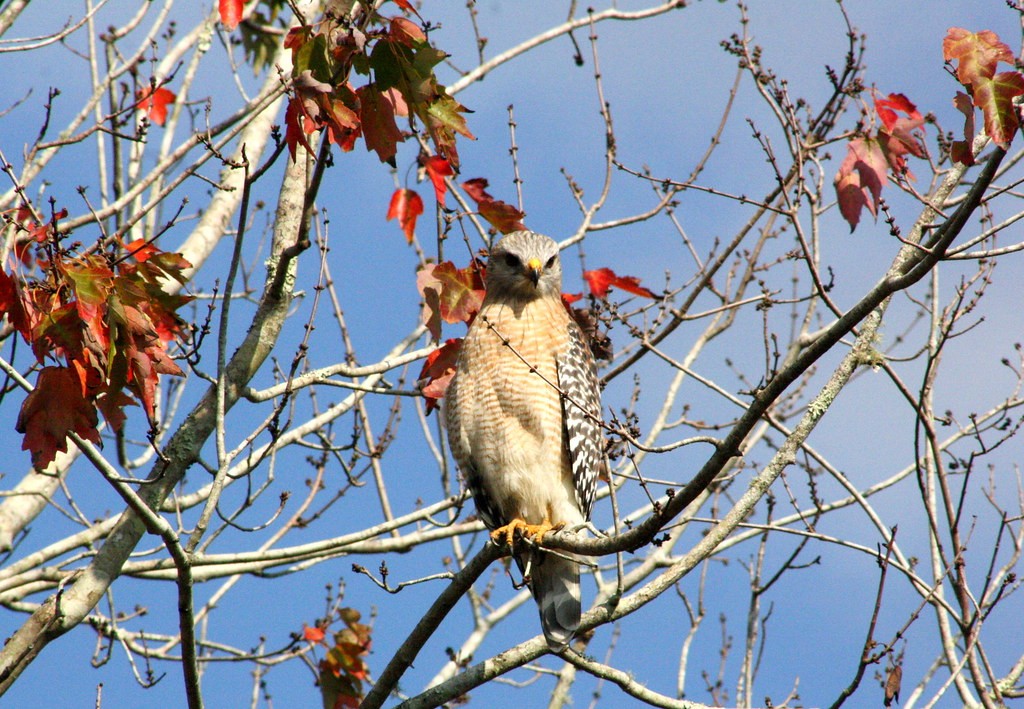
Get outside. What can you see? What can you hear?
Take on our urban biodiversity scavenger hunt and see what you can find — and learn — right in your own neighborhood.
People don’t often think of urban centers when they think about biodiversity. And yet, cities are where most of us interact with nature most often.
Have you ever seen a chipmunk? Probably. But have you ever looked for one?
In this activity, we encourage our community to seek out the different species of plants, birds, mammals, and insects that can be found in Montreal at this time of year. Take your phone or camera out on your next walk to the corner store, grab your kids for a fun quest, or relax on a bench in the park and see what you can spot!
The Urban Biodiversity Scavenger Hunt Challenge
Every Spring in April-May, we challenge our community to send their photos of the species on the list for a chance to win prizes!
Step 1: Check out the list of native species included in the hunt. Check out the list below. For each species, you'll find the common name in English and French, as well as the name in the Kanienʼkéha language; one or more photos, some information, and some tips on how to find them.
Step 2: If you don't already have an iNaturalist account, make one, and join our Urban Biodiversity Scavenger Hunt group project. Get your friends and family in on the fun! Make it a household activity or challenge your friends to a friendly competition.
Step 3: Get out there! For every species on the list that you find, take a photo, upload it to iNaturalist and mark it off in the checklist.
Step 4: Watch your progress on the project leaderboard, and document as many species as you can!
The scavenger hunt will run from April 22 (Earth Day) until May 22 (International Day for Biological Diversity). Prizes will be given out to those who find the most species, as well as for general participation through a draw.
Trees and plants
Want an extra hint to help find these trees?
Check out QuéBio's map of public Montreal trees.
Ashes are being destroyed in Montreal by the emerald ash borer (Wateronta’wénthos Otsi’nón:wa). Though many trees have died, some have been 'vaccinated' against this invasive beetle.
How you can find it:
- The bark is grey, thick and corky even on young trees
- The leaves are feather-like, with 7–13 (most often 9) leaflets arising from both sides.
- Often marked with spray paint (for removal or treatment) because of the invasion of the emerald ash borer.
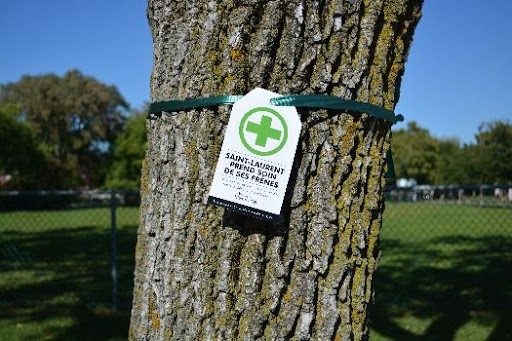
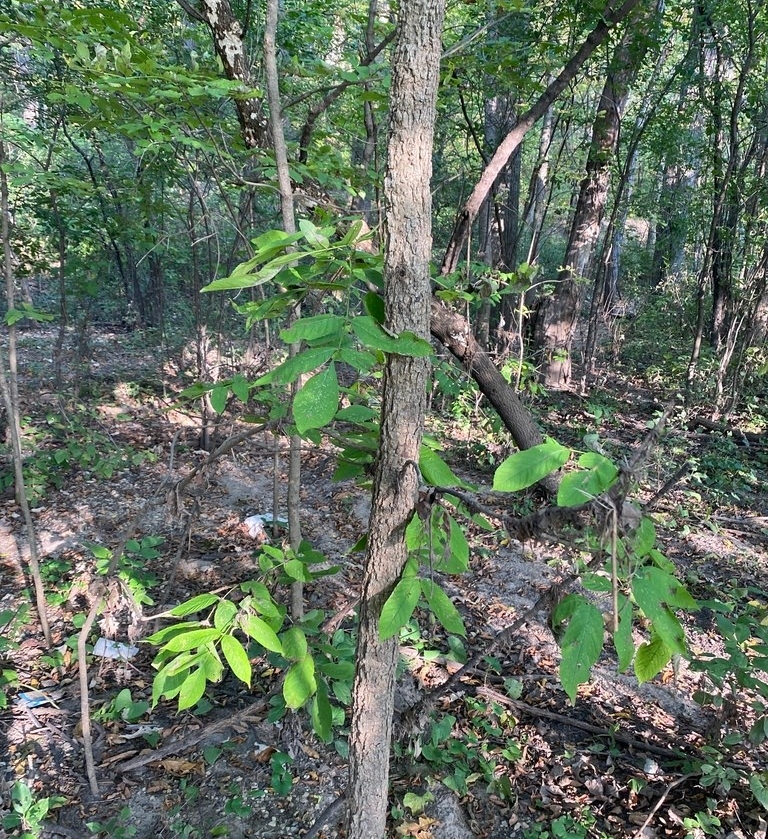
Green ashes are also threatened by the emerald ash borer (Wateronta’wénthos Otsi’nón:wa).
How you can find it:
- The bark is smooth and gray on young trees, becoming thick and fissured with age.
- The flowers are produced in spring at the same time as the new leaves.
- Very common street tree.
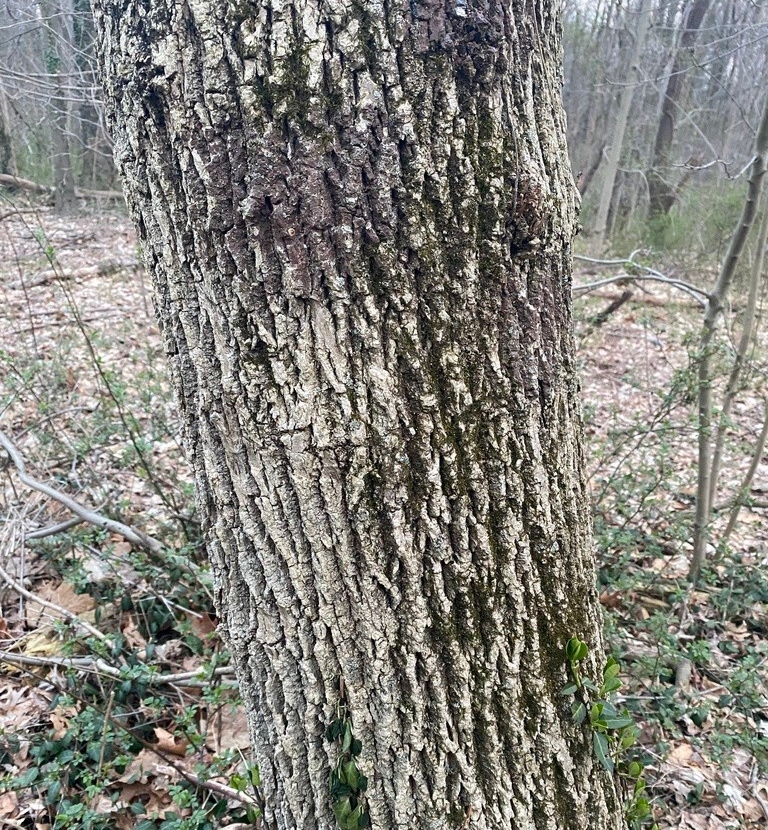
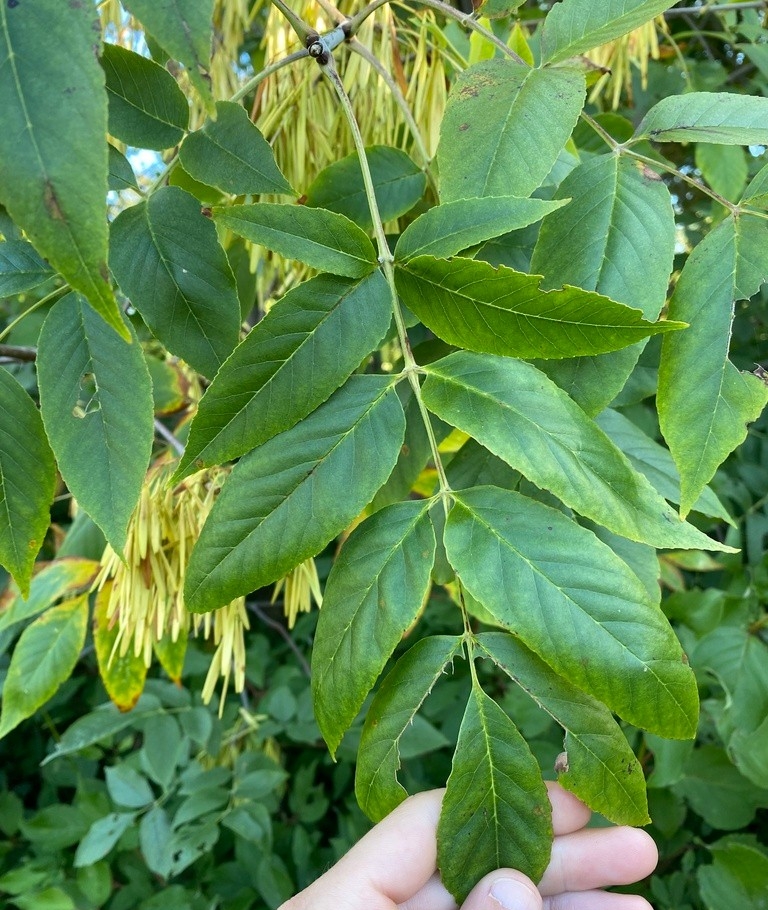
The name white ash derives from the glaucous undersides of the leaves. It is similar in appearance to the green ash, making identification difficult.
How you can find it:
- The lower sides of the leaves of white ash are lighter in color than their upper sides.
- The outer surface of the twigs of white ash may be flaky or peeling.
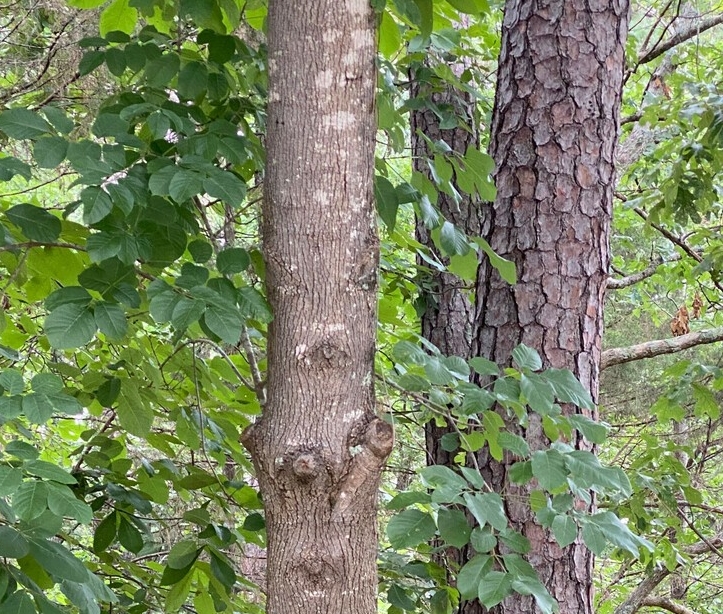
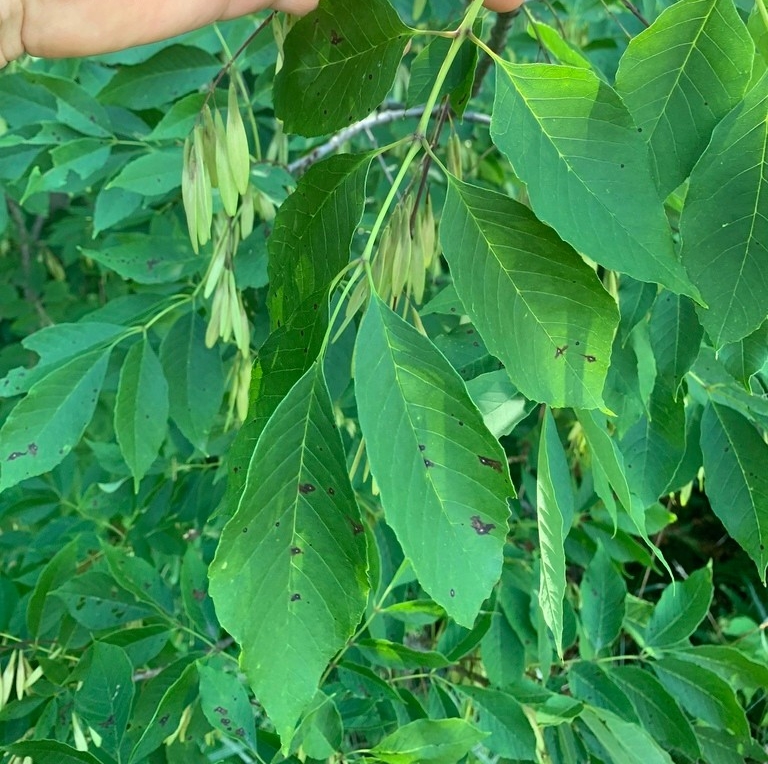
Traditionally used for many medicinal purposes, hackberry is very beneficial for wildlife and withstands harsh conditions very well. It is often used as a street tree.
How you can find it:
- Very distinctive bark, with "corky" irregular ridges.
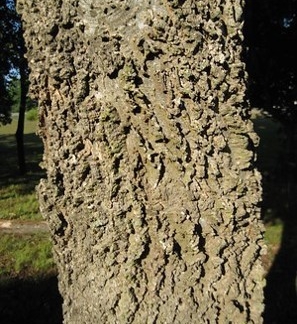
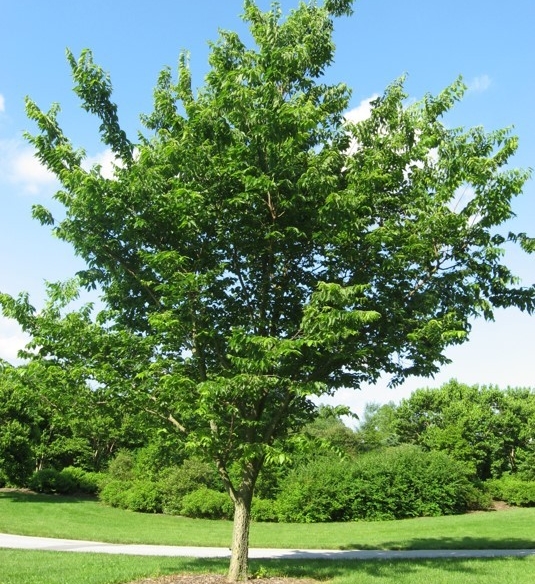
Its distinctive "papery" white bark is highly weather resistant. It can be used to make syrup or "birch beer".
How you can find it:
- Fairly common in yards or landscaped areas.
- Papery bright white bark that peels off in sheets.
- Small horizontal black lines on bark (lenticels).
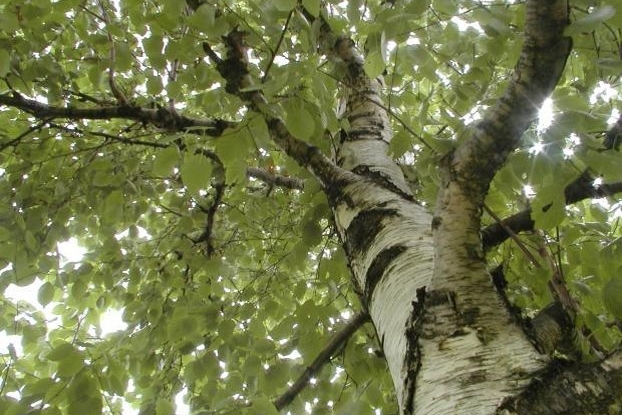
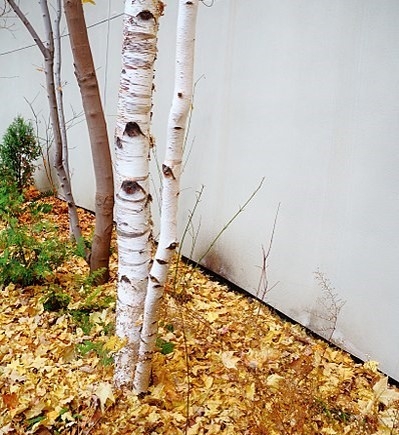
They tend to bloom very early in spring and have soft fuzzy tufts that are named for their resemblence to cats' paws.
How you can find it:
- Look for the soft fuzzy buds that have begun to appear for spring.
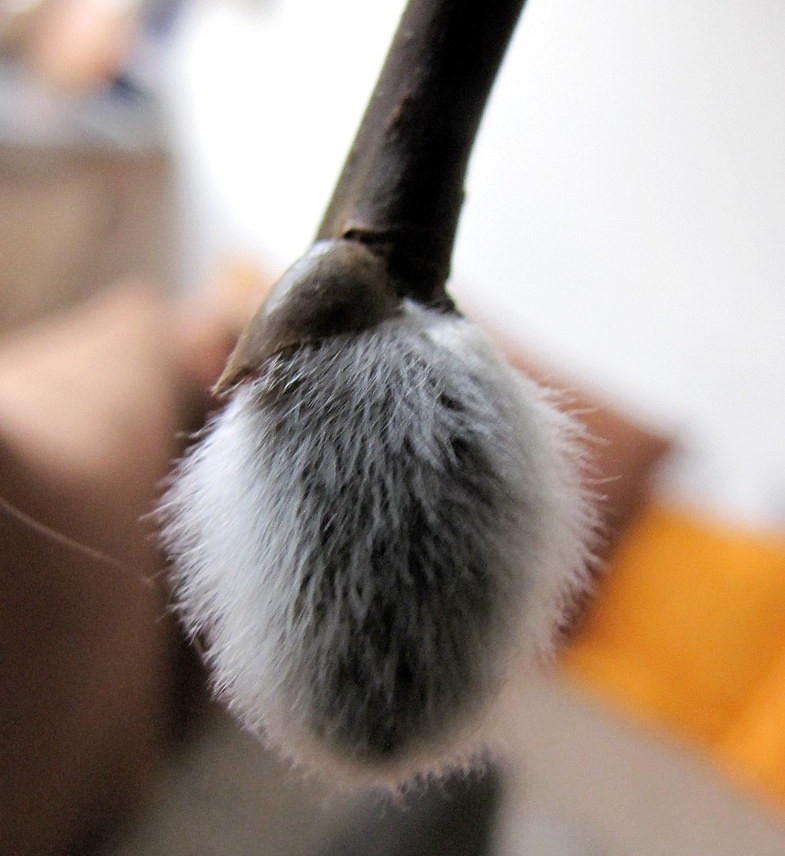
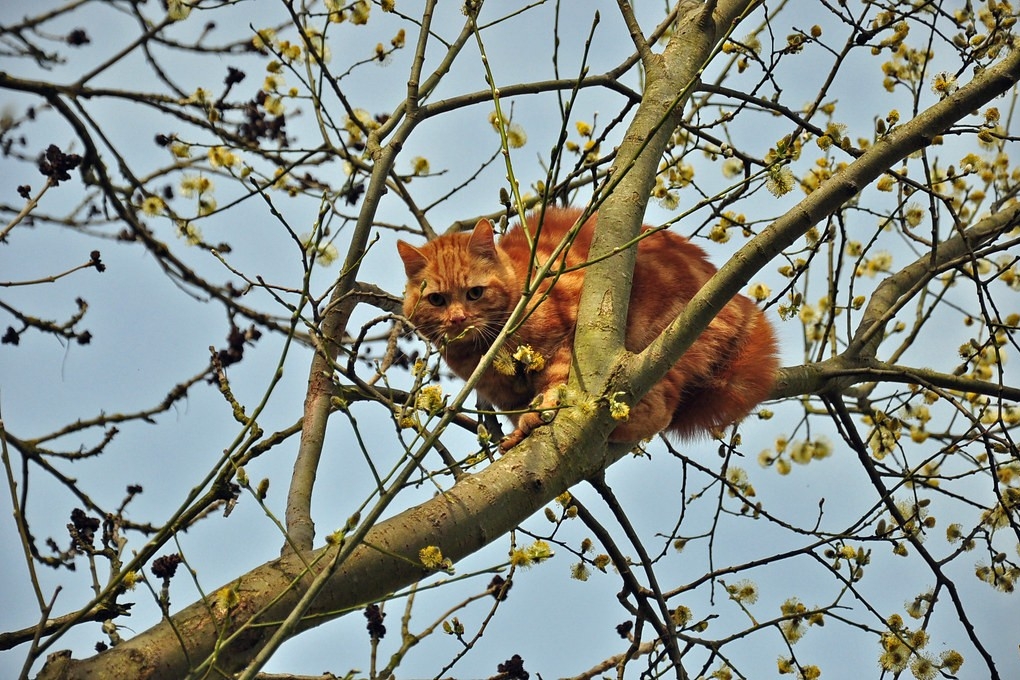
This tree can be tapped for syrup, but produces a darker, stronger-tasing sap than sugar maple.
How you can find it:
- Red buds that swell late in winter and form clusters of tiny red flowers in spring long before the leaves.
- Sometimes last year's characteristic leaves still cling to the tree.
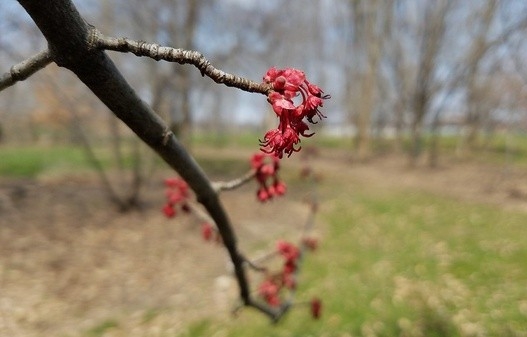
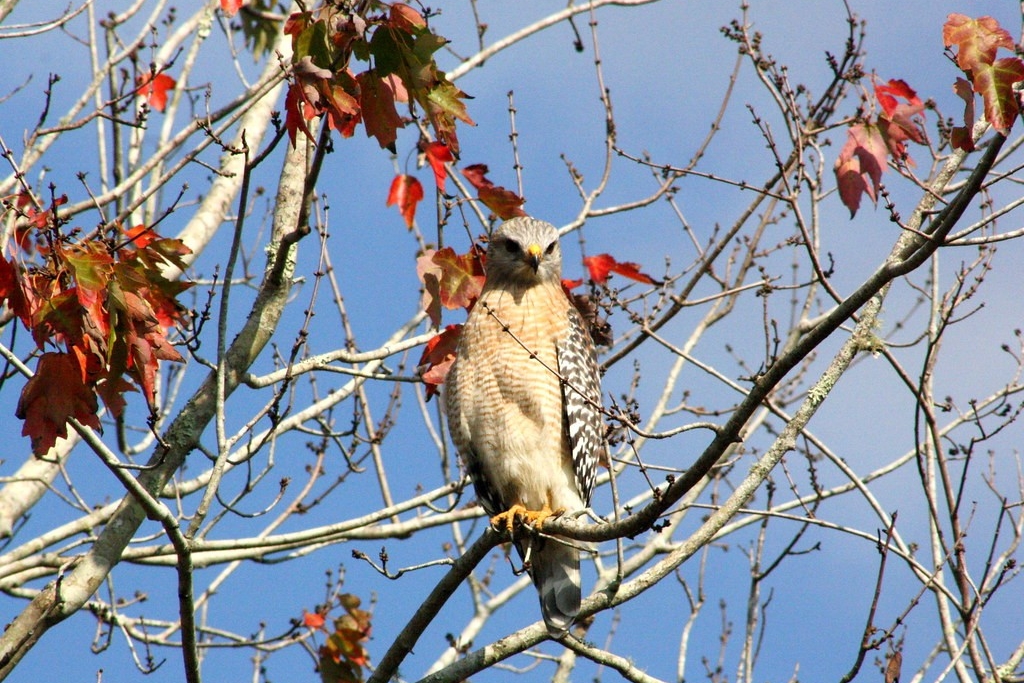
This is a native tree to our region of Quebec and is very commonly growing along our streets.
How you can find it:
- Disctinctive shaggy bark.
- Tiny green flowers appear early in spring, before red maple flowers (soon!)
- Large ones are very common in neighbourhood around Loyola.
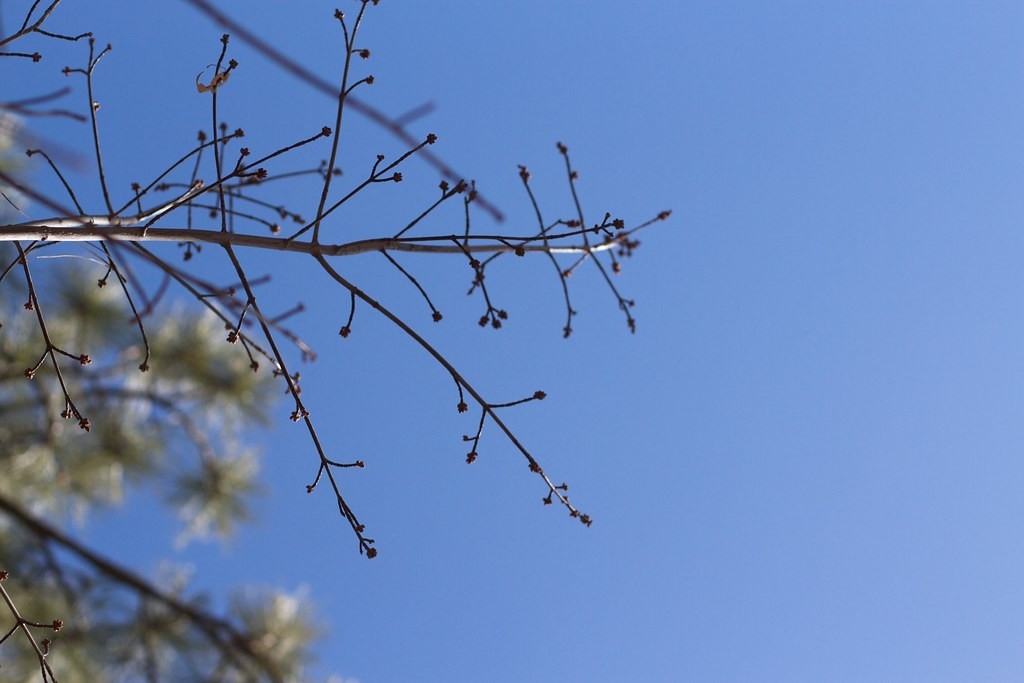
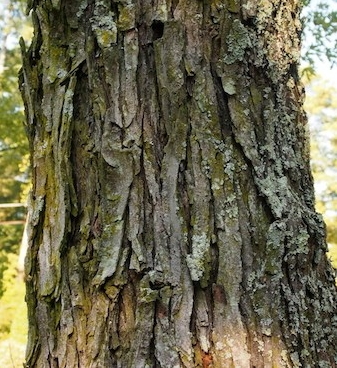
Spotted horsemint contains thymol, an antiseptic and fungicide
How you can find it:
- Heads of purple-spotted tubular yellow flowers above rosettes of large white- or pink-tipped bracts
- Attracts pollinators in great numbers, especially wasps.
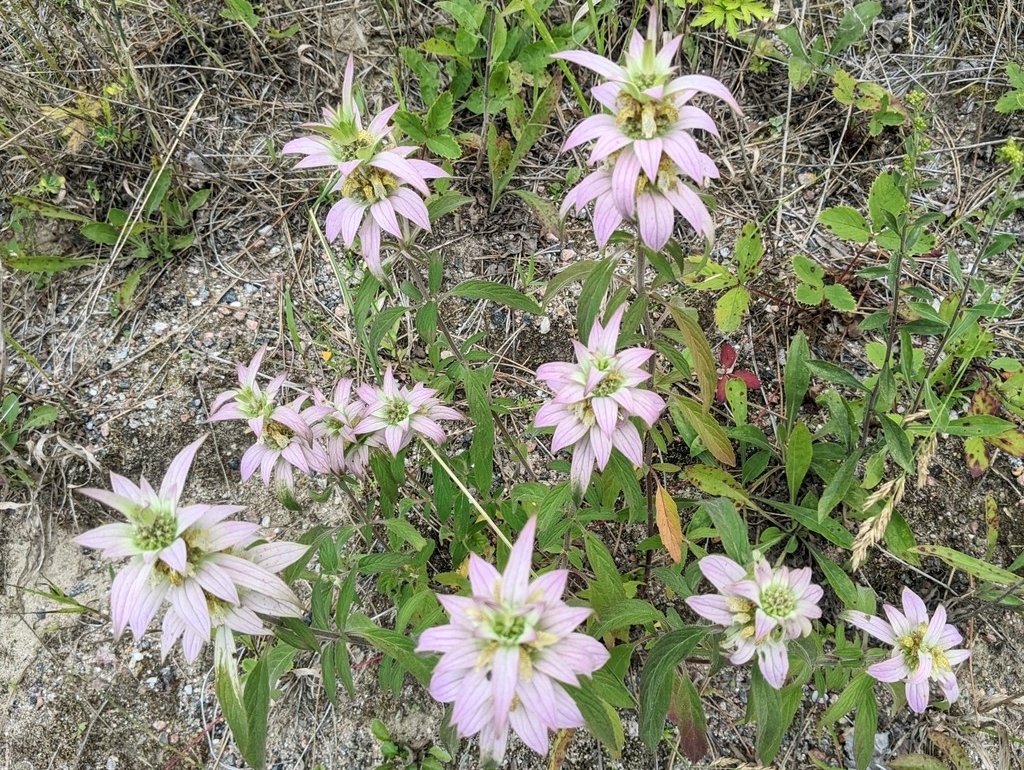
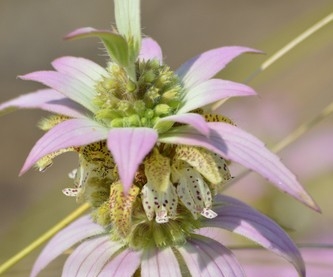
Native to this region and slow growing, Cedars are among the oldest trees in Quebec — some are over 800 years old.
How you can find it:
- Often planted as a shrub in the city, and used as a hedge.
- But they can also form large trees when planted alone.
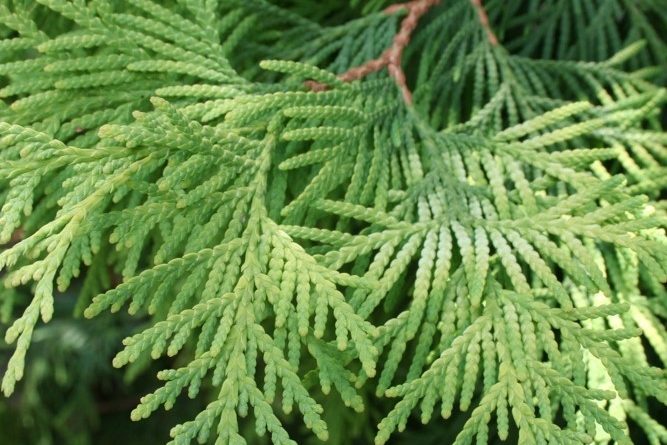

Quebec's provincial tree, its twigs smells like peppermint if you scratch them.
How you can find it:
- Not as common in Montreal as outside the city, look in more "natural" areas.
- Very distinctive peeling, golden tinted bark.
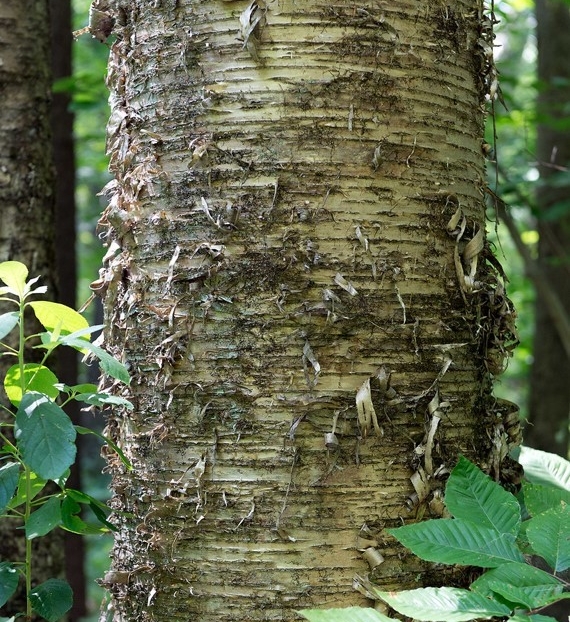
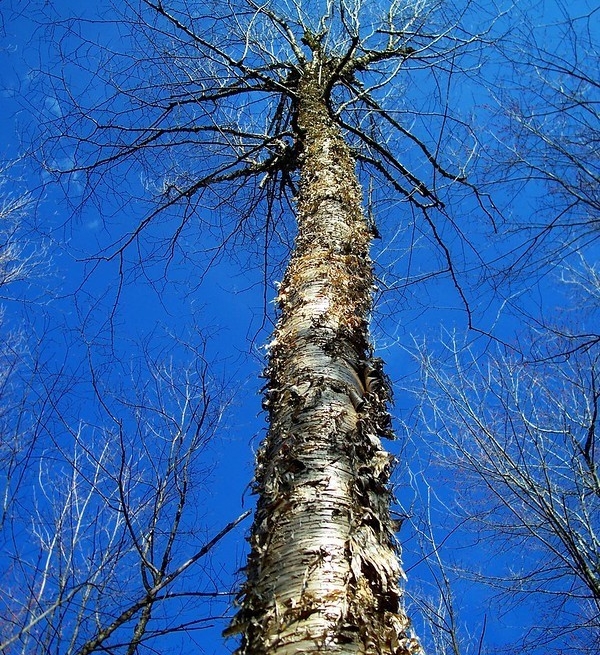
Wild bergamot or bee balm is a widespread and abundant native plant in much of North America. With showy summer-blooming pink to lavender flowers, it is often used as a honey plant, medicinal plant, and garden ornamental.
How you can find it:
Pink and lavender flowers that attract butterflies, bees and hummingbirds the most!
They are around 60-150 cm tall
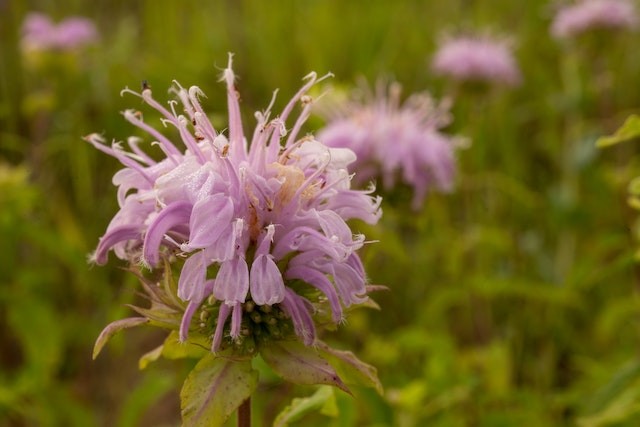
Birds
Crows are all about family! They mate for life and the young stay around for at least a year to help the parents raise siblings. Sometimes they gather in huge groups ("a murder of crows") at dusk and spend the night in trees in these huge groups but the family groups split from the main "murder" and go their own way during the day. American Crows are native.
How you can find it:
- They often hang out in twos or threes in adjacent trees.
- Listen for their "caw caw caw" calls.
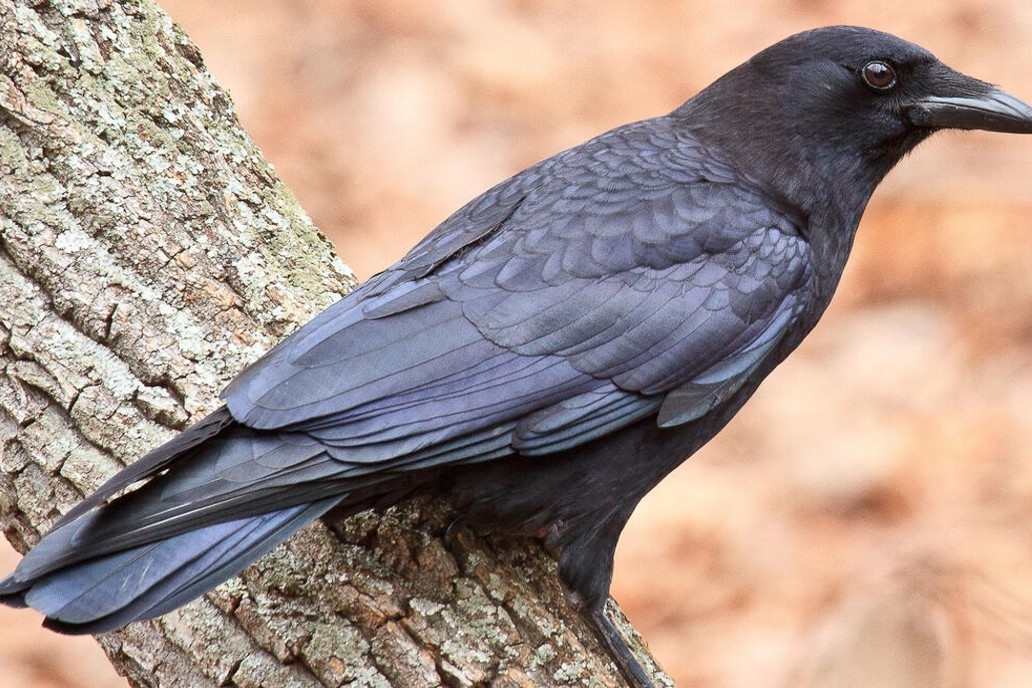
These beautiful yellow native birds use spiderwebs to hold their nests together and have a bubbly flight song.
How you can find it:
- You'll mostly find them in trees.
- Look for them in flight when you hear a bubbly song.
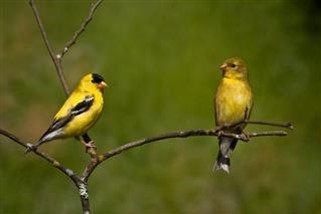
If you listen, this native bird could wake you up with its morning song. Like many birds, they travel in flocks in the winter but defend individual territories in the spring and summer.
How you can find it:
- In open grassy areas, singing from trees or bushes.
- Listen for its whistling song, especially in the morning and early evening.
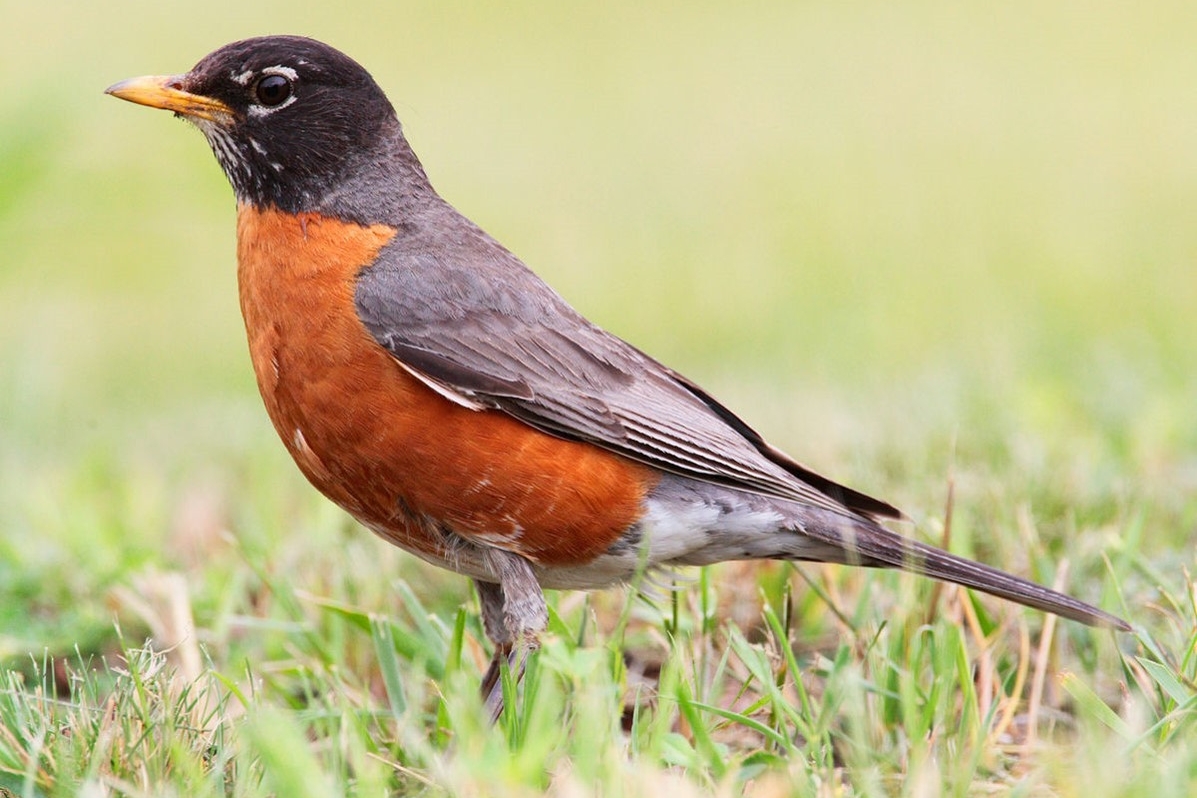
They nest in holes in trees and can sometimes be enticed to eat seeds or apples from your hand in the winter. Although they're tiny, they also have a mobbing call that brings all kinds of other birds out to defend against a larger predator like a larger bird, squirrel, or cat.
How you can find it:
- In trees and bushes.
- Listen for the "chickadee-dee-dee" call when they're agitated, or the "spring's here" song when they're not.

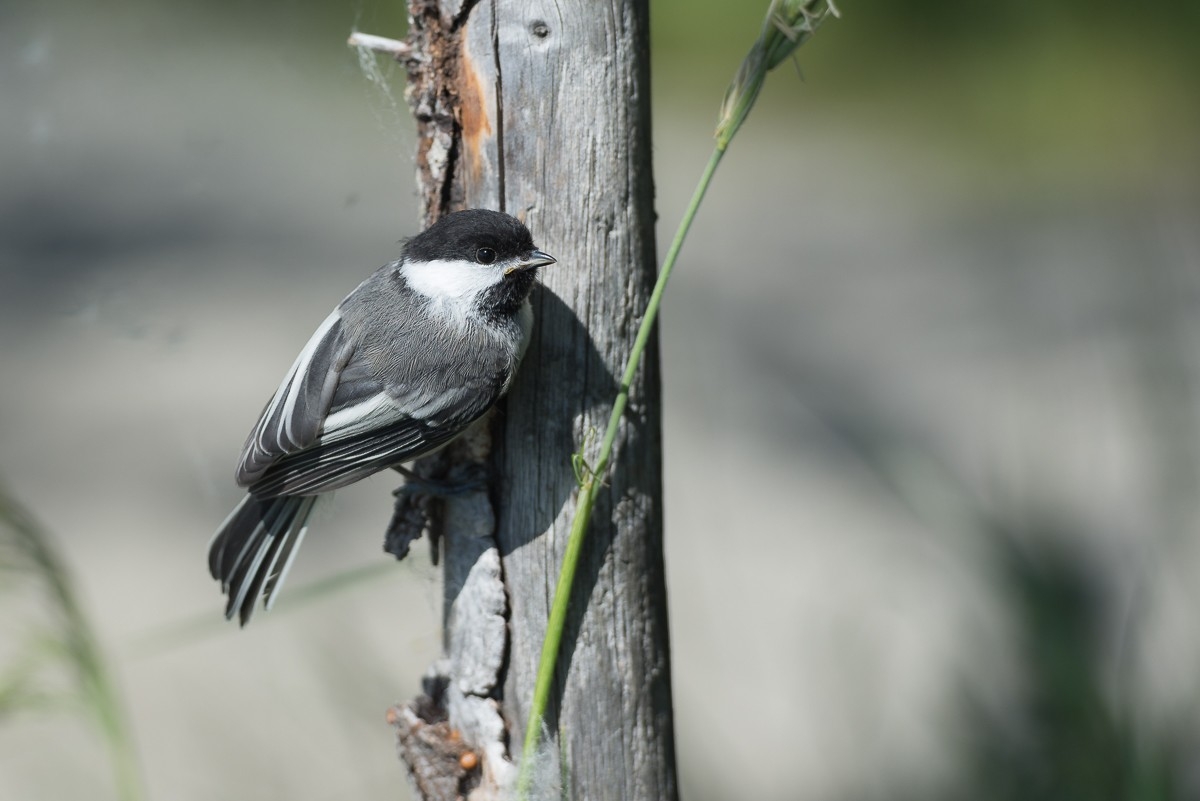
The boreal chickadee is known for its high pitched trill patterns used in communication with other birds and food storage habits in preparation for winter months
How you can find it:
- They have grey-brown upperparts with a brown cap and greyish wings and tail
- Their face is mainly grey with white on the sides.
- Their underparts are white with brown on the flanks and a black throat.
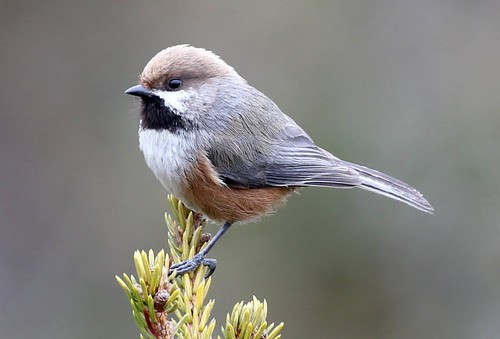
These geese are great partners, extremely devoted and protective of each other. Adults also "babysit"-- they often watch over each other's young.
How you can find it:
- Flying overhead in V formation during this time of year as migrate back home from the south.
- In parks, near water.
- Listen for their forlorn-sounding honks.
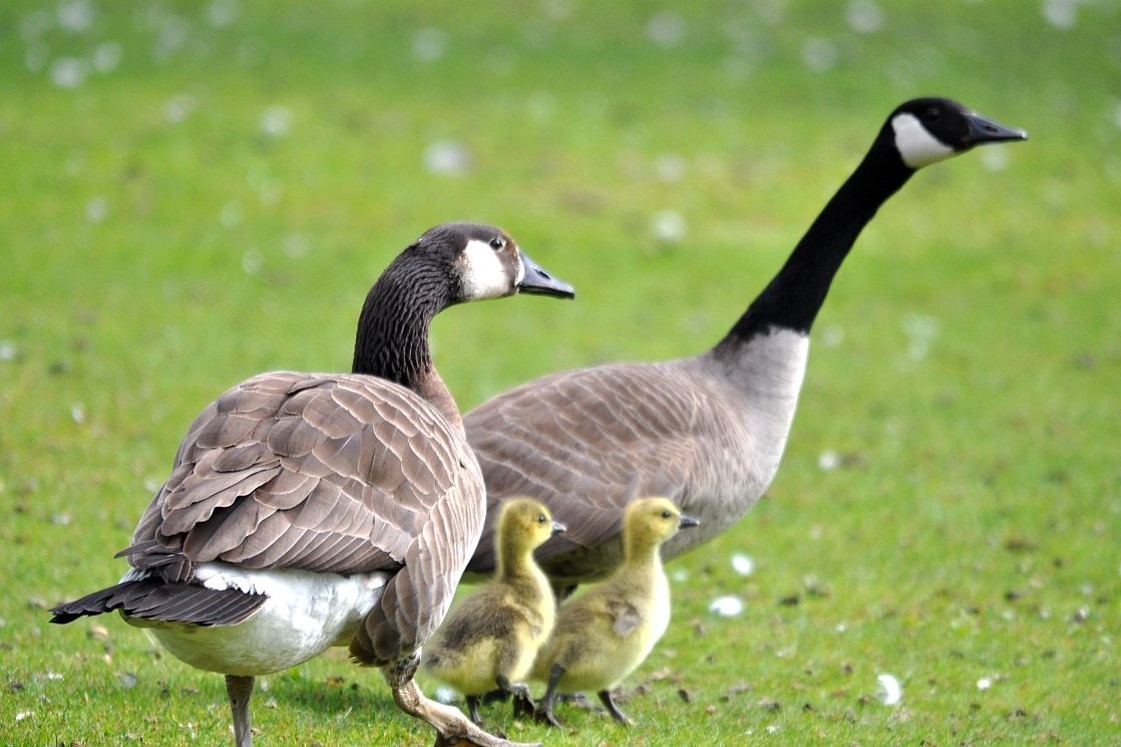
Common ravens have coexisted with humans for thousands of years. Part of their success as a species is due to their omnivorous diet; they are extremely versatile and opportunistic in finding sources of nutrition, and unusually intelligent.
How you can find it:
- A mature common raven ranges between 54 and 71 cm.
- The bill is large and slightly curved.
- Ravens are distinguished from crows by their tail shape, larger wing area, and more stable soaring style, which generally involves less wing flapping
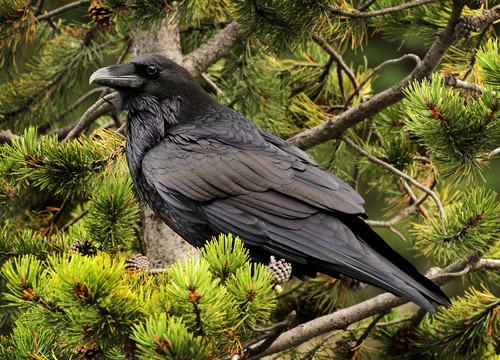
These showy native birds mate for life! Also, the females sometimes sing, just like the males, which actually isn't that common among birds.
How you can find it:
- Bushes and trees.
- Listen for the sharp "chip-chip-chip" song or its descending whistle call. Where there's one, there are usually two, and they tyically check in with each other vocally every few seconds!
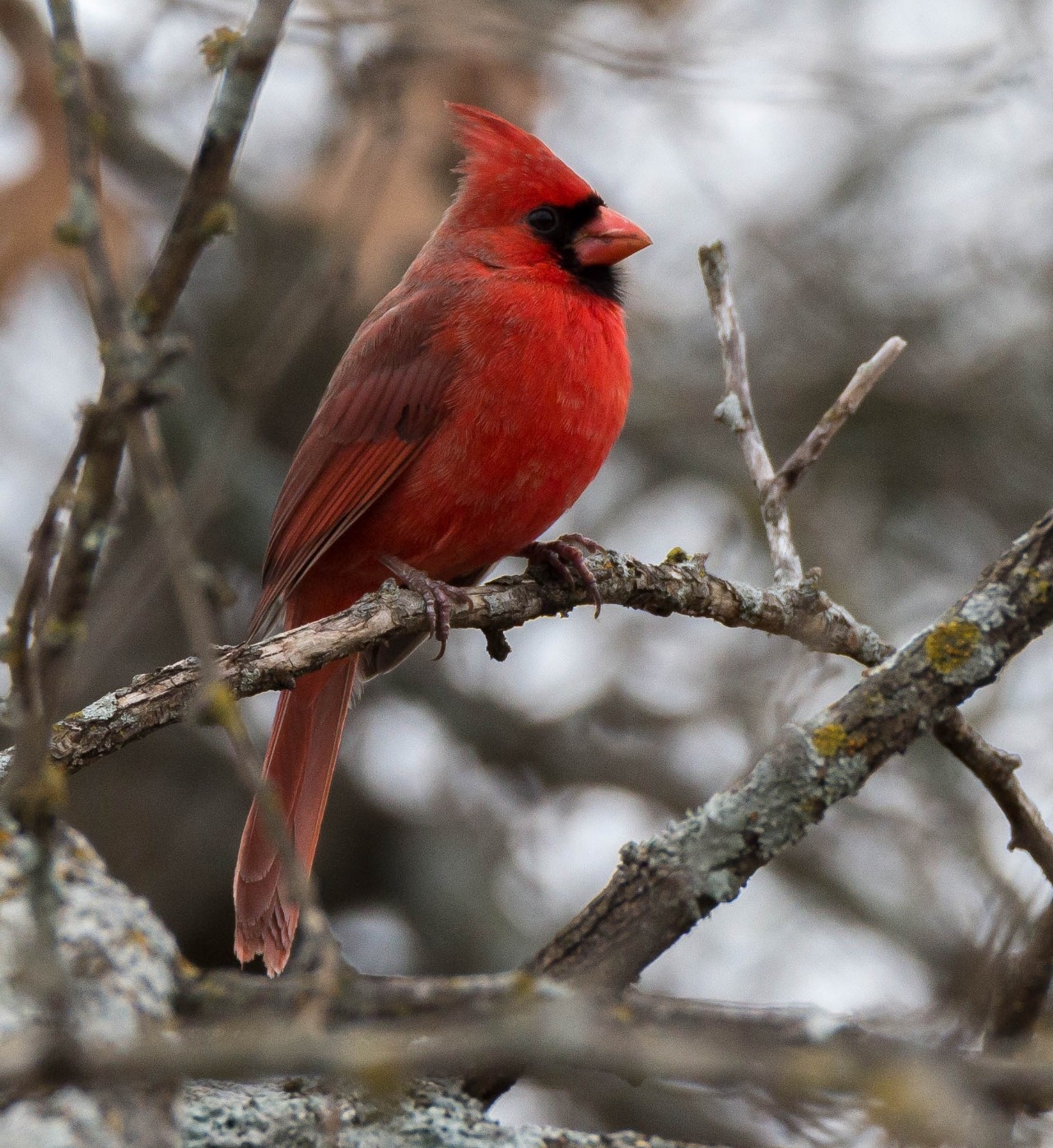 Male cardinals are bright red
Male cardinals are bright red
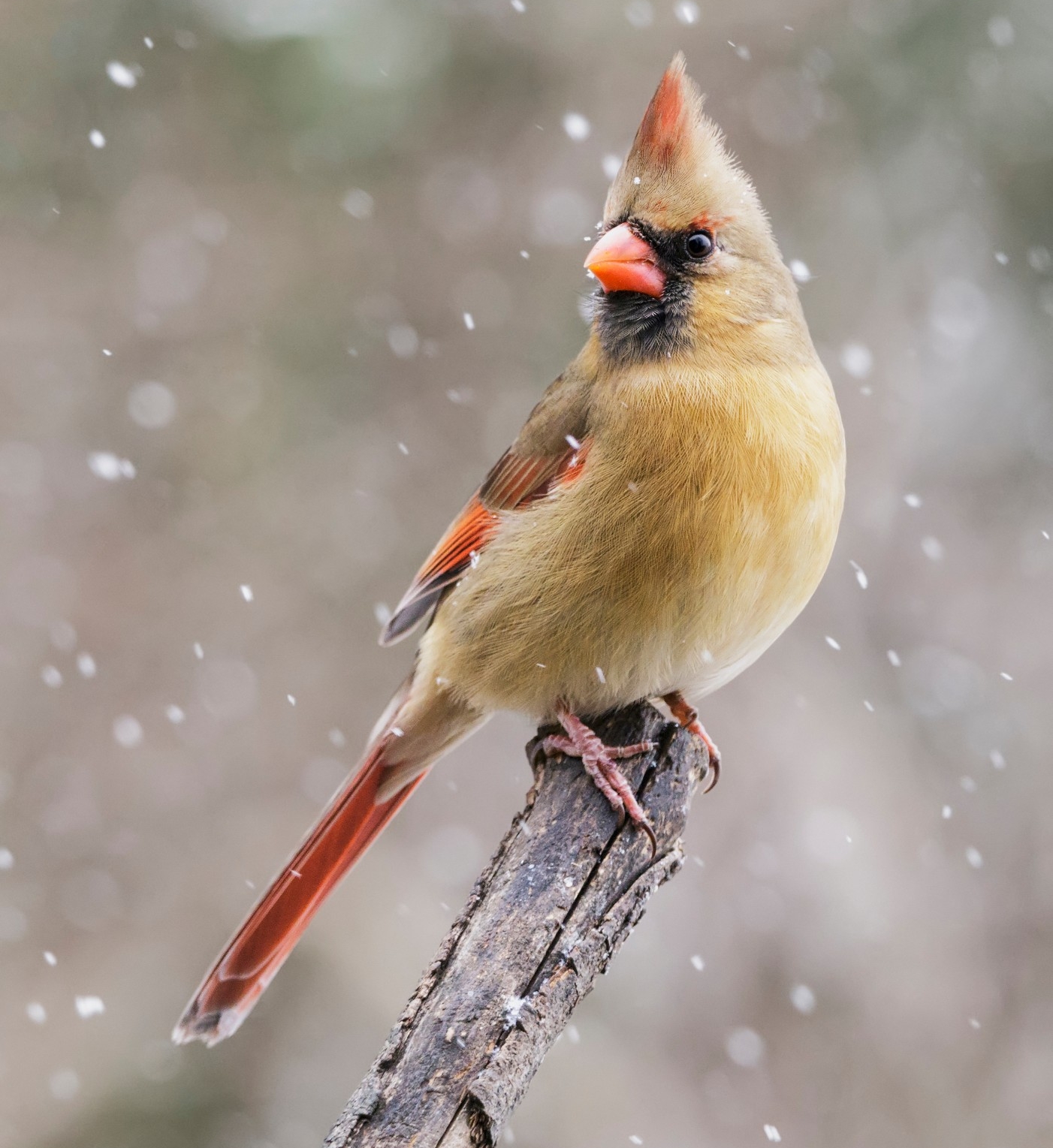 Female cardinals are duller in colour but still beautiful
Female cardinals are duller in colour but still beautiful
Northwestern crows are large, shiny, black birds with long, solid bills.
How you can find it:
- They can be distinguished from Common ravens by their smaller size, straight or slightly rounded tails, and higher-pitched voice.
- Northwestern crows are smaller than the closely related American Crows and have lower, huskier voices.

These native birds are the fastest animals in the air; they can reach up to 320 km/hr!
How you can find it:
- Usually in flight.
- They nest in tall buildings and structures in the city.
- If it's a quiet day you might hear their sharp call from up high.
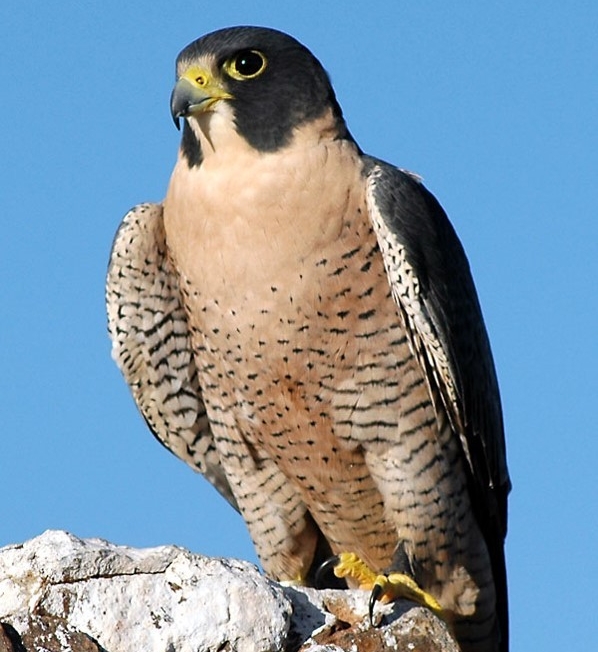
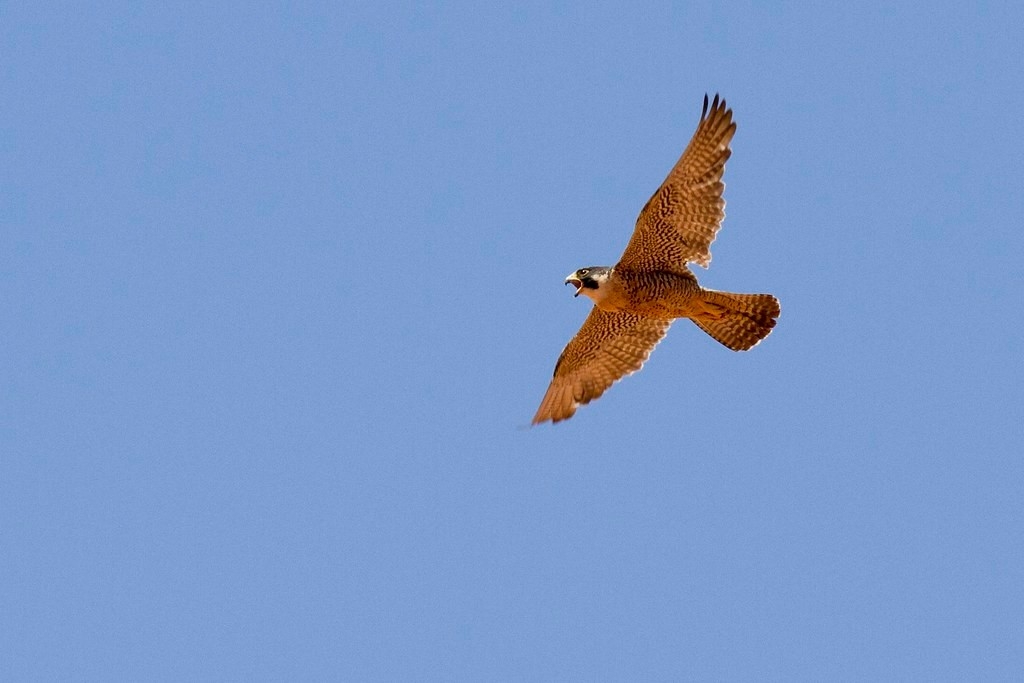
The Pine siskin is in the finch family, and is a migratory bird with an extremely sporadic winter range.
How you can find it:
- Adults are brown on the upperparts and pale on the underparts, with heavy streaking throughout.
- They have short forked tails.
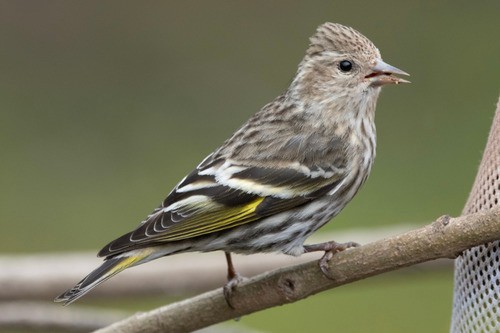
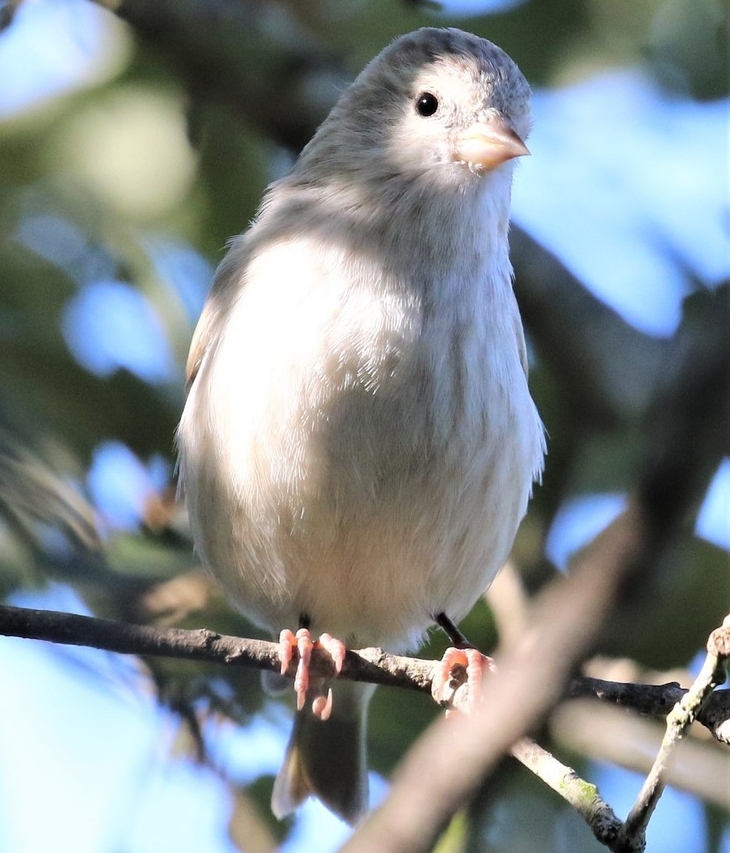
Easily the most common duck in the area! They are found in virtually any wetland habitat, no matter where it’s located.
How you can find it:
Males have a bright green head, thin white collar, dark reddish-brown chest, yellow bill, and a black rump with a white-tipped tail.
Females are mottled brown with orange and brown bills.
Both sexes have purple-blue secondary feathers on their wing, which is most visible when they are standing or flying.
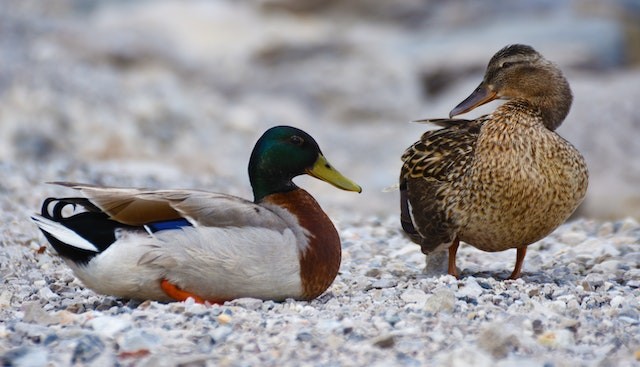
This native species eats dead animals so actually benefits humans. It sounds gross but they help keep our world clean!
How you can find it:
- Look up! You'll often see them circling overhead, even in downtown Montreal.
- Often seen around highways.
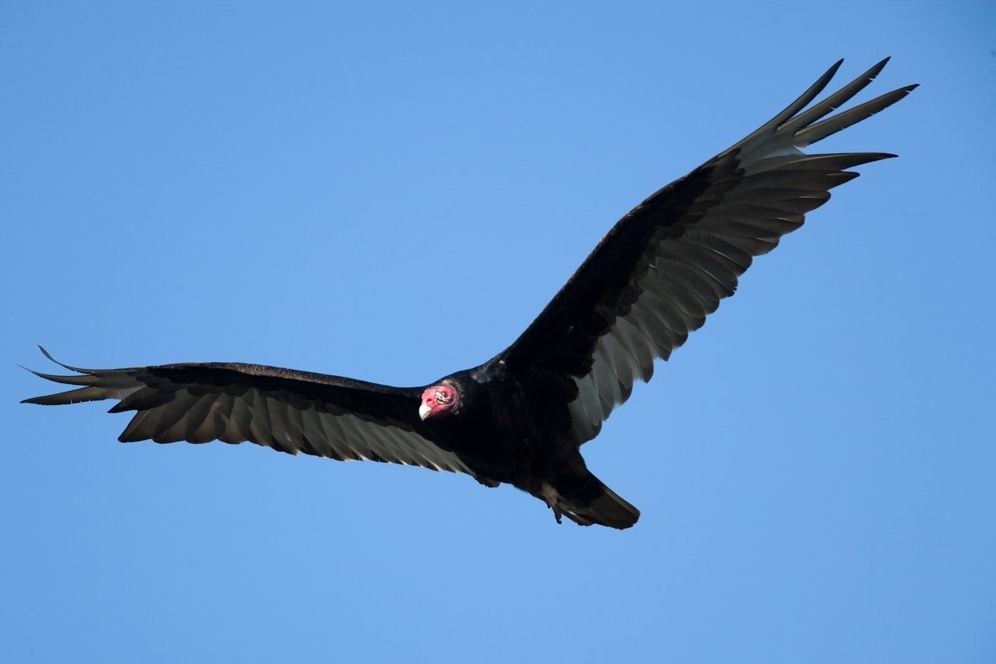
Insects
Carpenter ants get their name from their nest building, where they will excavate and form smooth tunnels inside of wood.
How you can find it:
- They occupy a range of habitats including various types of conifer and hardwood forests, clearings, oak scrubland, disturbed areas, pastures and seashore grassland.
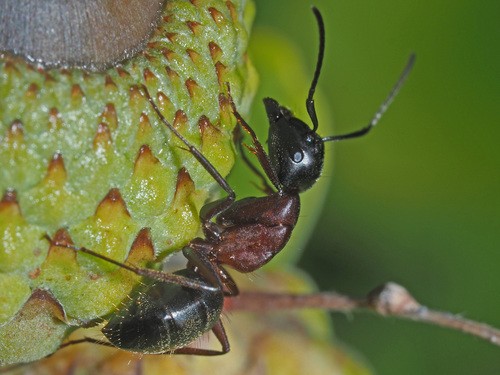
Carpenter ants get their name from their nest building, where they will excavate and form smooth tunnels inside of wood.
How you can find it:
- The Nearctic carpenter ant is a relatively small carpenter ant, ranging from 3.5 to 7.5 mm (0.14 to 0.30 in) in length.
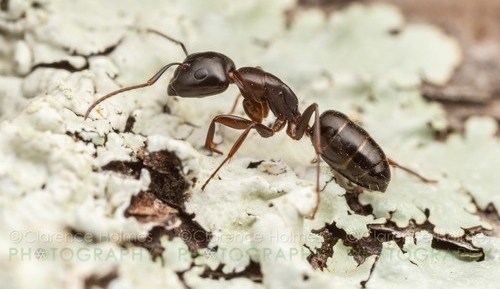
Carpenter ants get their name from their nest building, where they will excavate and form smooth tunnels inside of wood.
How you can find it:
- These large carpenter ants are relatively shiny and have distinctly red mesosoma.
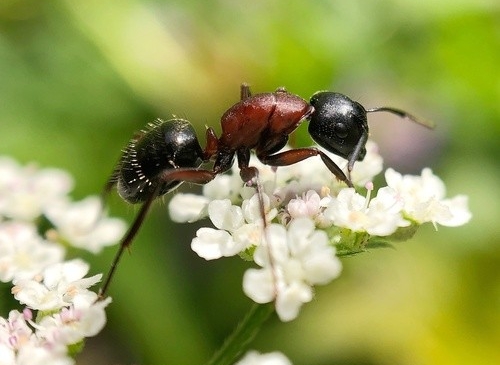
Carpenter ants get their name from their nest building, where they will excavate and form smooth tunnels inside of wood.
How you can find it:
- These carpenter ants can be distinguished from other carpenter ant species by the dull black color of the head and body, and by whitish or yellowish hairs on the abdomen.
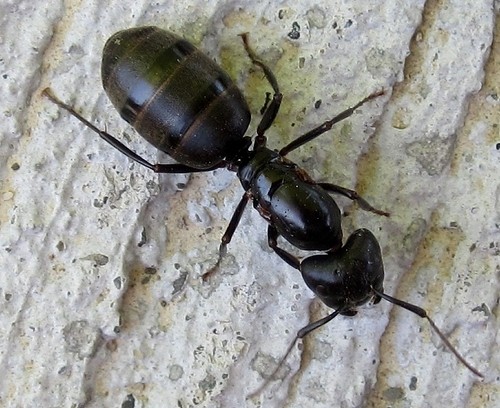
Underground, their nests form a series of tunnels and gallieries.
How you can find it:
- Easily! They are also known as the sidewalk ant, and can be found on the ground or in the park, on hot sunny days.
- You can often find their nests which resemble shallow mounds of sand.
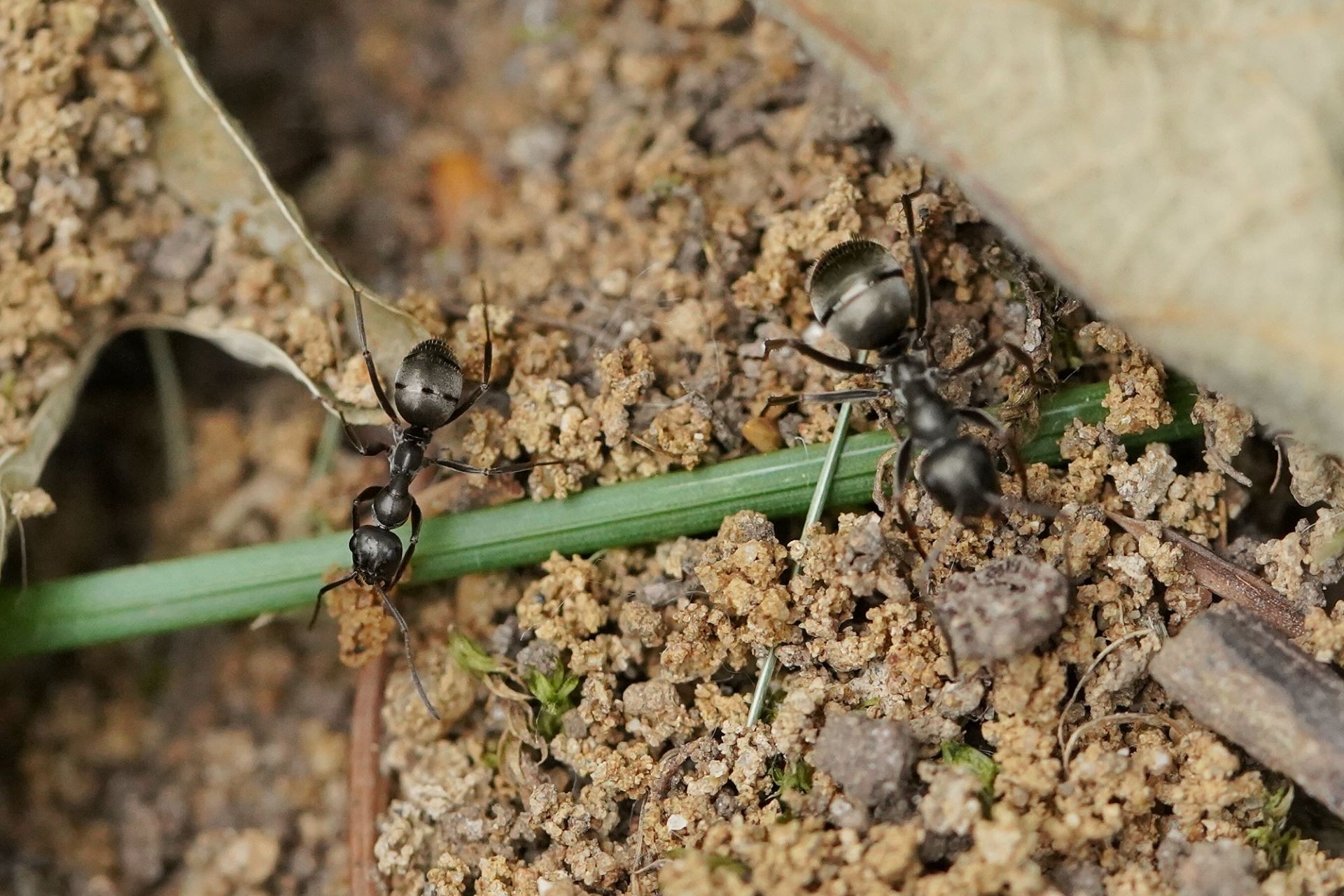
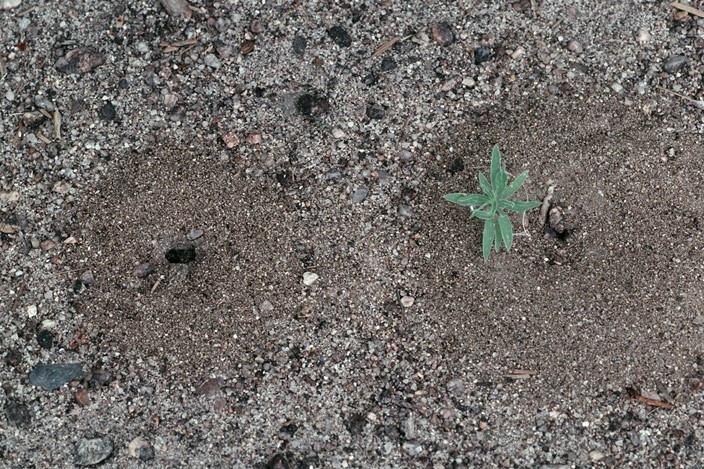
Digger bees are typically large, unusually fuzzy bees that tend to nest in soil—hence their name. Digger bees are excellent pollinators, said to be even more beneficial to us than honeybees and bumblebees.
How you can find it:
- Commonly fuzzier than most bees.
- Often their stripes are clearer and more distinct than those of honeybees, but not quite as bright as bumblebees.
- You can identify them by their most obvious characteristic: their digging.
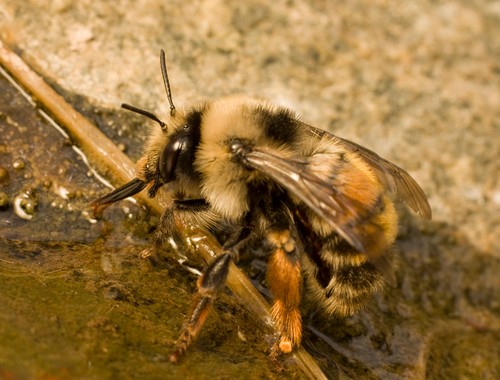
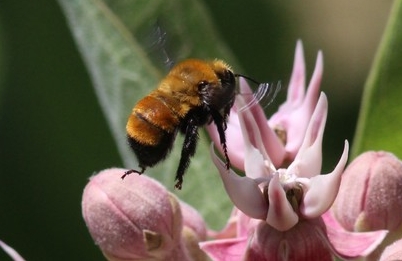
When crushed underfoot, these ants give off a lemon-like odour.
How you can find it:
- Light-yellow to dark yellow or light-brown colouration.
- Citronella ants have tiny hairs all over their bodies and antennae made up of 12 segments.

Azures can often be mistaken for Eastern tailed-blue butterfuly and Blue spring moths. Unlike the others, Azures fly strongly up into shrubs and lower tree branches.
How you can find it:
They have blue or purple-blue wings with thin dark and white borders borders
Their hindwing fringes are checkered
You can typically find them in old fields, clearings and edges of deciduous woods, freshwater swamps, and wooded marshes.
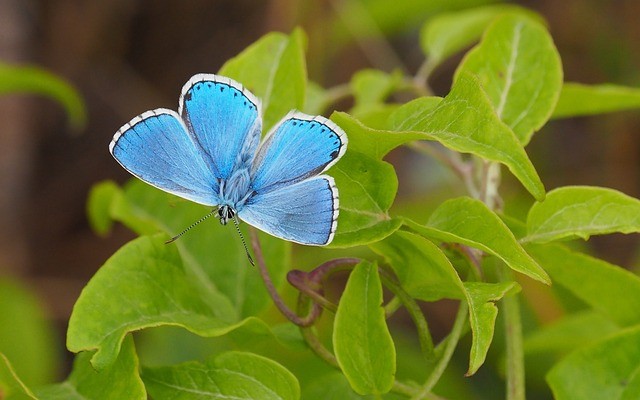
These moths are often mistaken for hummingbirds.
How you can find it:
- Adults are small, diurnal moths that resemble bumblebees in shape.
- The antennae are strongly clubbed and each has a small, recurved hook at the end.

This moth is sometimes called "hummingbird moth" or "flying lobster".
How you can find it:
- The moth's abdomen has yellow and black segments much like those of the bumblebee, for whom it might be mistaken due to its color and flight pattern similarities
- The larvae feed on plants like dogbane and honeysuckles.
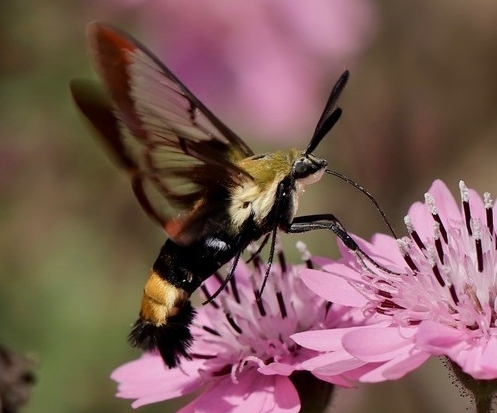
This is among the first butterflies of spring, because it overwinters locally instead of migrating.
How you can find it:
- You will find it flitting about on hot, sunny days!
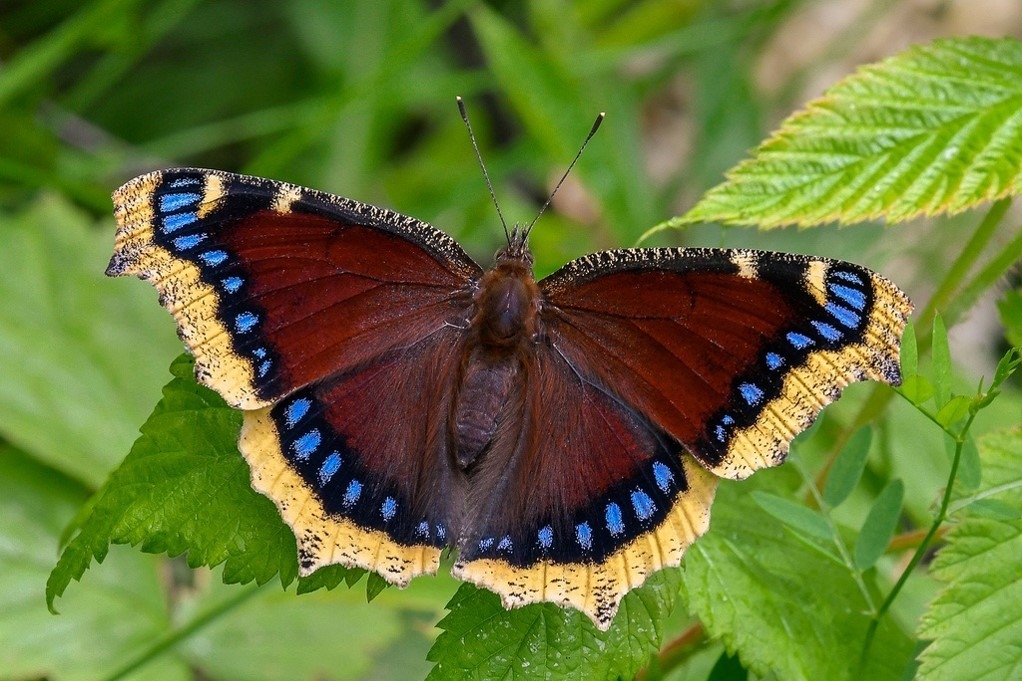
This is a migratory butterfly and is usually among the first to return to Montreal each spring.
How you can find it:
- On hot, sunny days you'll find it near early-blooming grasses and flowers.
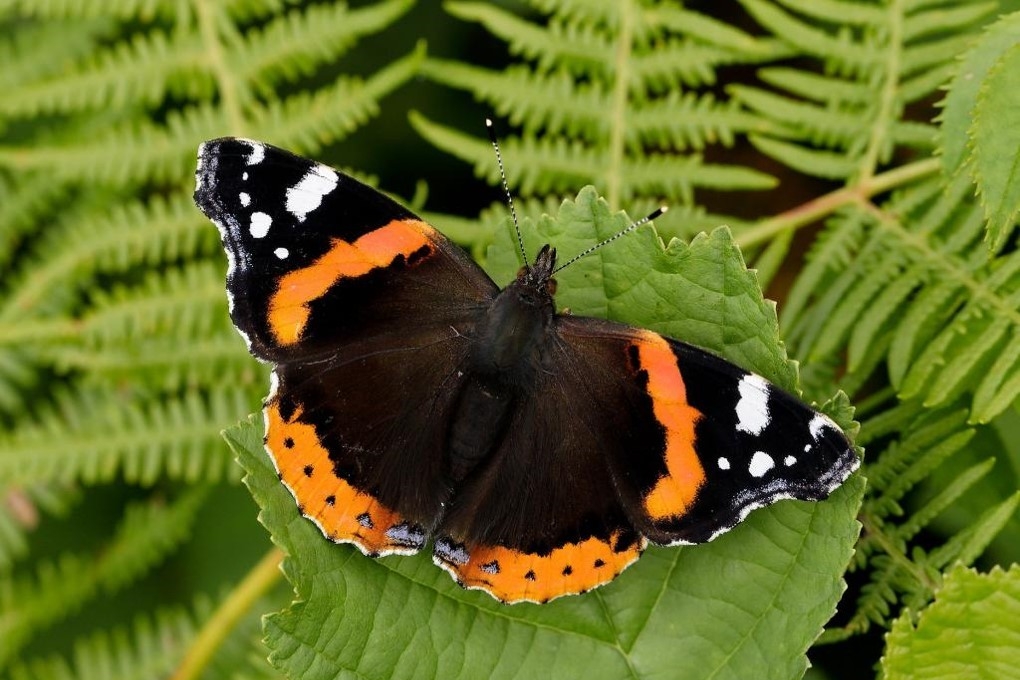
This ant abounds in boreal and cold-temperate habitats where it nests in rotten logs and stumps and under stones in forests.
How you can find it:
- This ant has a clearly defined offset, short, and upturned basal tooth on its mandible.
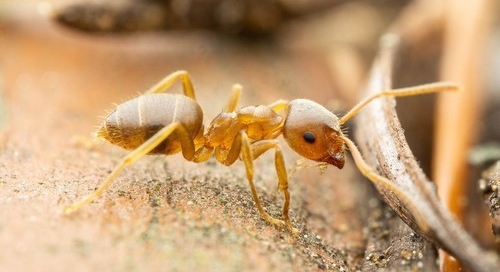
This ant can be found in forests, woodlands, and meadows.
How you can find it:
- Specifically, this ant nests in rotten logs in bogs, fens, and moist woodlands.
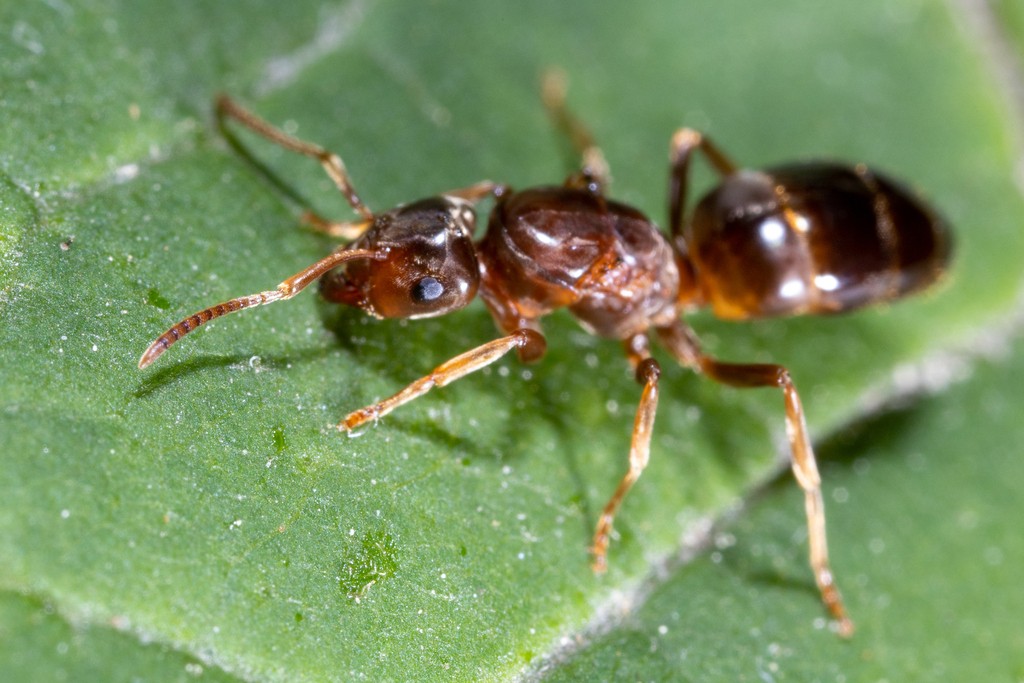
This species nests in rotten logs and stumps, and under stones. It is a temporary social parasitism, which means it establishes new colonies with the assistance of a host species.
How you can find it:
- These ants are yellow or pale brown, with small eye.
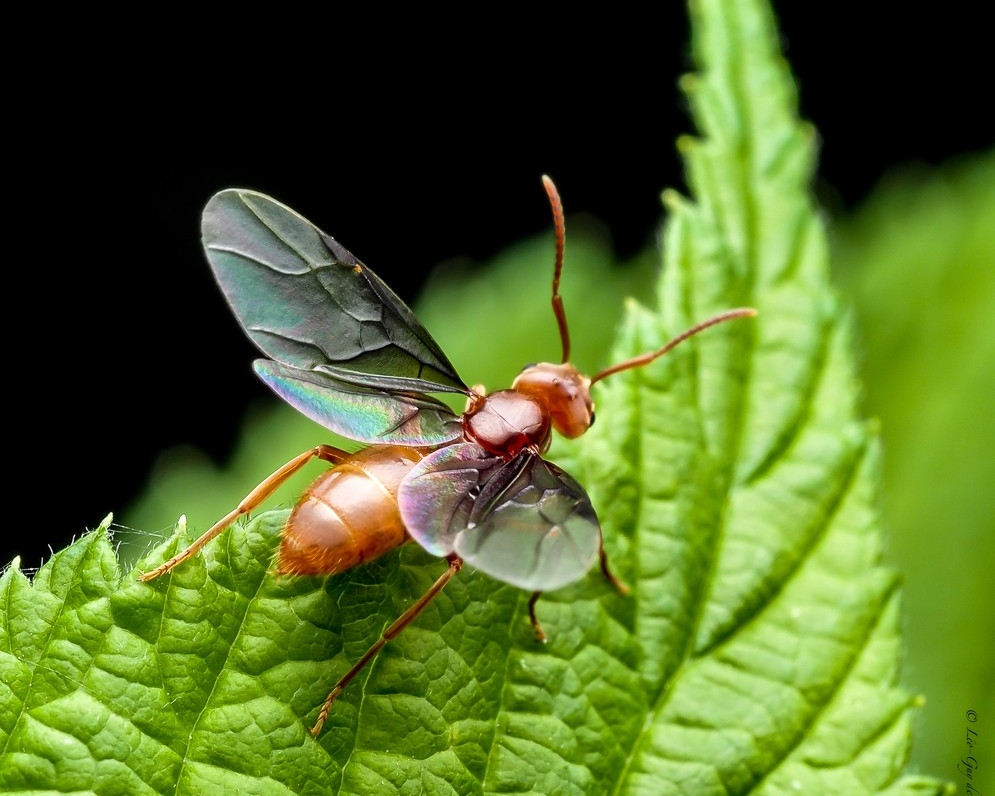
A predominately subterranean woodland species found in moist forests, it is most often seen when nest chambers are located under ground covering objects such as stones or logs.
How you can find it:
- This species is a hard one to spot, as it lives and forages almost exclusively undergroun!
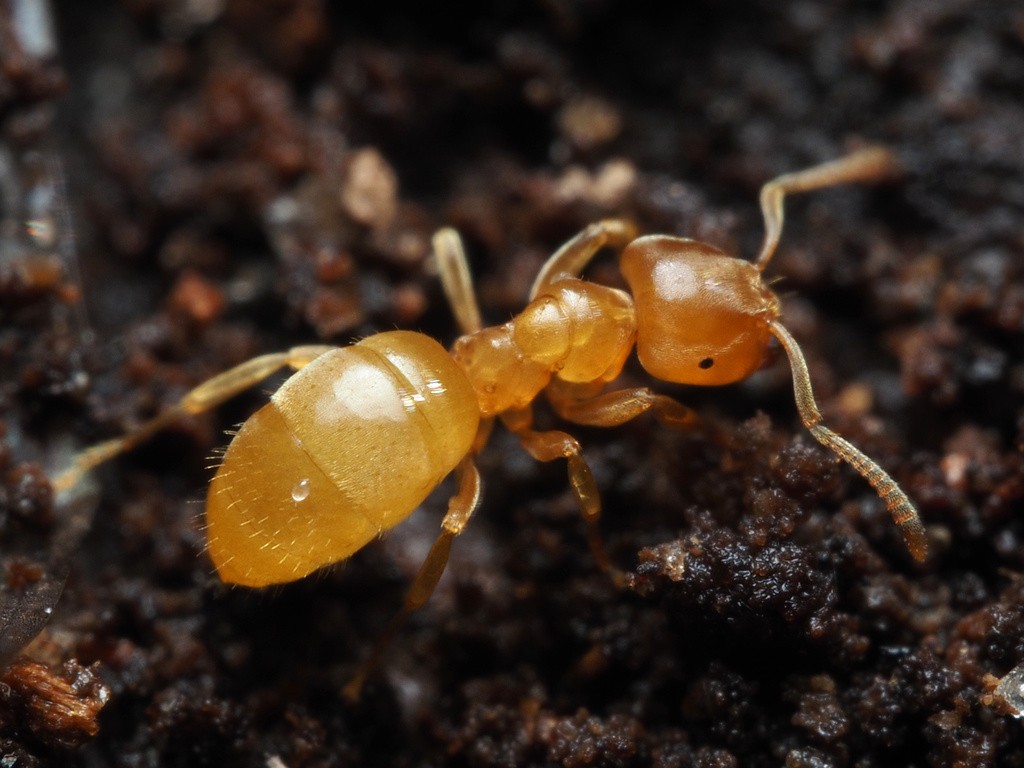
Mammals
Red foxes live around the world in many diverse habitats, including in human environments such as urban areas. Red foxes are solitary omnivorous hunters. If living among humans, foxes will opportunistically dine on garbage and pet food.
How you can find it:
Red foxes have long snouts and red fur across the face, back, sides, and tail. Their throat, chin, and belly are grayish-white.
Red foxes have black feet and black-tipped ears that are large and pointy.
One of the most noticeable characteristics of the red fox is the fluffy white-tipped tail.
Red foxes are about three feet long and two feet tall.
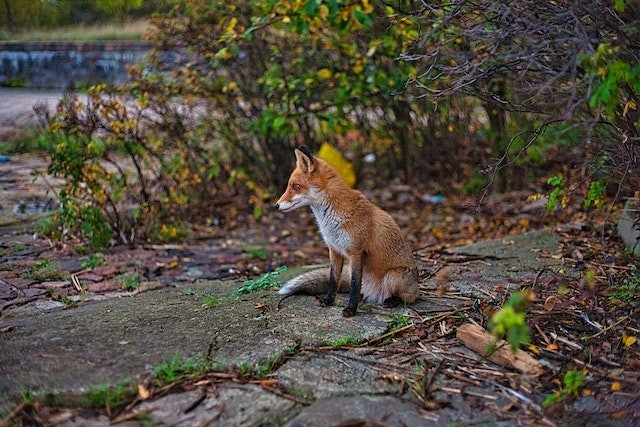
The Eastern grey squirrel’s most notable physical feature is its large bushy tail. It acts as a rudder when the animal jumps from high places, as a warm covering during the winter, as a signal to other eastern grey squirrels indicating an individual’s mood, and perhaps as a sunshade.
How you can find it:
Very common in most neighborhoods in the city with lots of trees!
There are typical signs that eastern grey squirrels inhabit an area: the gnawed husks and shells of nuts, can be found littering the ground around the base of a tree where the squirrels have been feeding.
The eastern grey squirrel’s alarm call is a series of rapid clicking sounds—kuk, kuk, kuk—which warns all other nearby squirrels of danger.
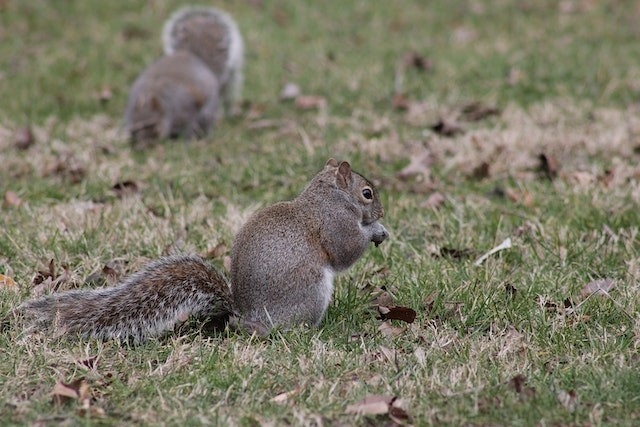
Red squirrels can be easily identified by their smaller size, 28–35 cm total length (including tail), territorial behavior, and reddish fur with a white venter (underbelly). Red squirrels are somewhat larger than chipmunks.
How you can find it:
They are less common in cities but can be found in the woods.
Look up in the trees and listen closely: red squirrels make lengthy, descending trills and chatter of assorted notes and chucks to communicate.
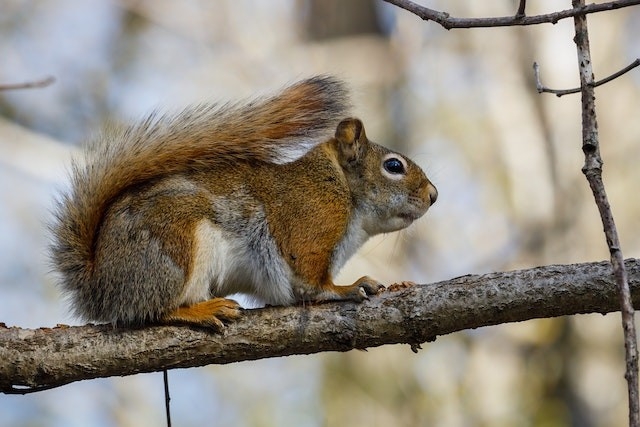
Adults may measure from 41.8 to 68.5 cm in total length, including a tail of 9.5 to 18.7 cm . Groundhogs have four incisor teeth, which grow 1.5 millimetres per week! Constant usage wears them down again by about that much each week. They are well-adapted for digging, with powerful, short legs and broad, long claws.
How you can find it:
Groundhogs often burrow under open areas such as meadows and farmlands (or big backyards and a certain Concordia campus!). Their burrows can be as deep as 20 metres.
Burrows are where they sleep, raise their babies, and even poop. (They actually have separate bathrooms!)
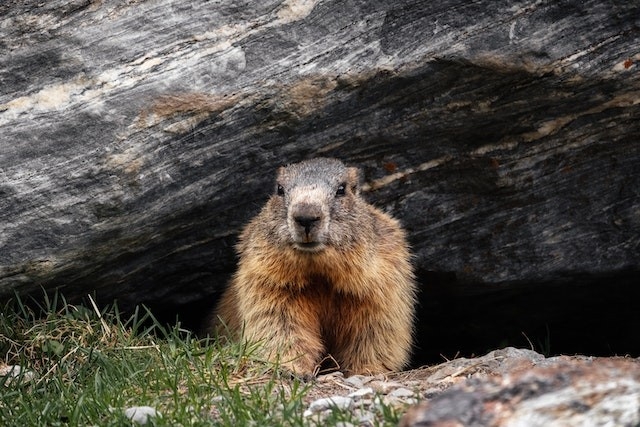
Three of the raccoon's most distinctive features are its extremely dexterous front paws, its facial mask, and its ringed tail.
How you can find it:
Raccoons have adapted very well to urban areas.
In the evening, raccoons are easy to spot up on Mount-Royal.
After a gestation period of about 65 days, two to five young known as "kits" are born in spring, so keep a look out for babies!
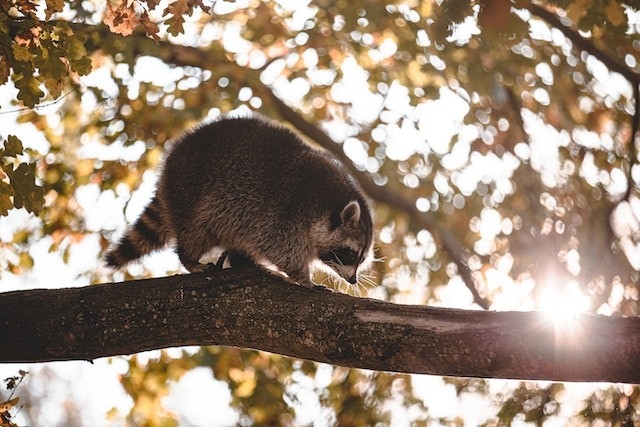
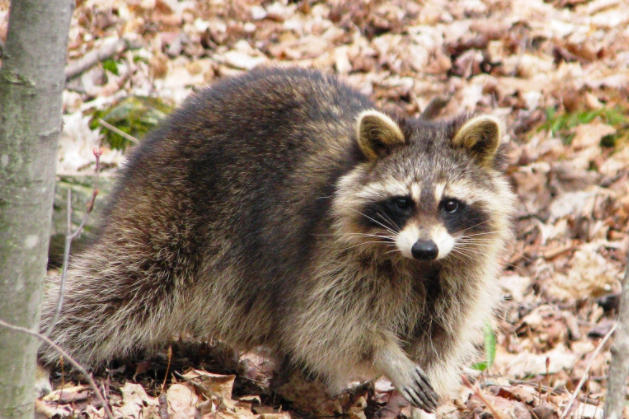
The name "chipmunk" comes from the Ojibwe word ᐊᒋᑕᒨ ajidamoo, which translates literally as "one who descends trees headlong."
How you can find it:
The eastern chipmunk lives in deciduous wooded areas and urban parks. It prefers locations with rocky areas, brush or log piles, and shrubs to provide cover.
It has reddish-brown fur on its upper body and five dark brown stripes contrasting with light brown stripes along its back, ending in a dark tail.
It has a tawny stripe that runs from its whiskers to below its ears, and light stripes over its eyes.
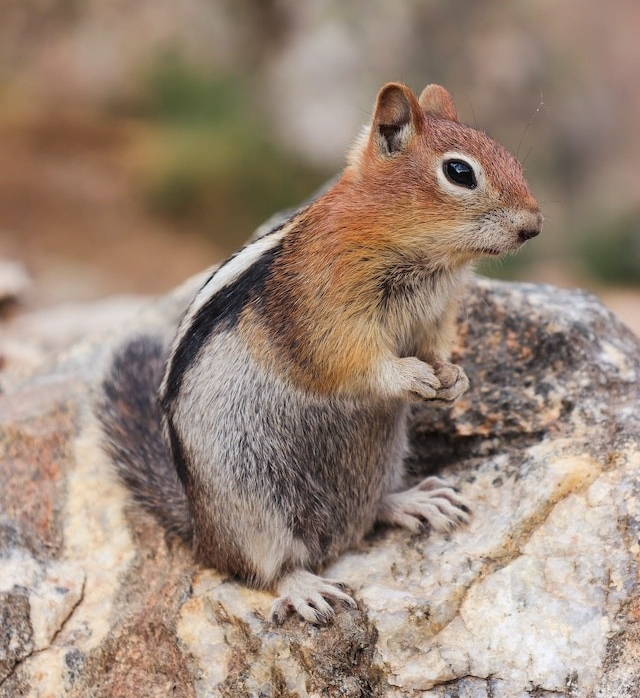
The beaver is the largest rodent in North America, and is semiaquatic. It has a large, flat, paddle-shaped tail and large, webbed hind feet. The unwebbed front paws are smaller, with claws. The forepaws are highly dextrous, and are used both for digging, and to fold individual leaves into their mouth and to rotate small, pencil-sized stems as they gnaw off bark.
How you can find it:
Beavers are mainly nocturnal, so they may be hard to spot. Look for bite mark on trees and dams in aquatic areas, but be sure not to disturb their habitat!
Since they’re so hard to spot, we will accept their dams as a submission for the scavenger hunt!
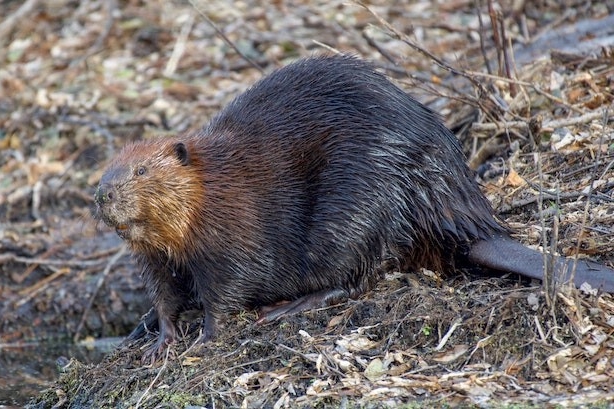
The subspecies of white-tailed deer found in our region is the northern white-tailed deer—the largest and darkest of the species.
How you can find it:
The deer's coat is a reddish-brown in the spring and summer.
They can be recognized by the characteristic white underside to its tail. It raises its tail when it is alarmed to warn the predator that it has been detected.
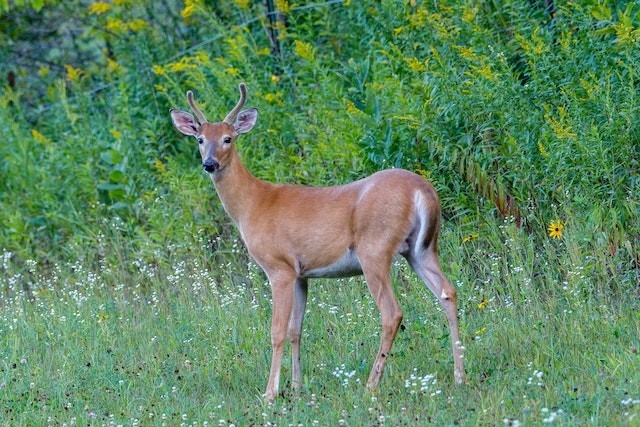
Kanien'keha:ka words verified using the Iontewennaweienhstáhkwaʼ - Mohawk language dictionary by Mika Publishing Company.

